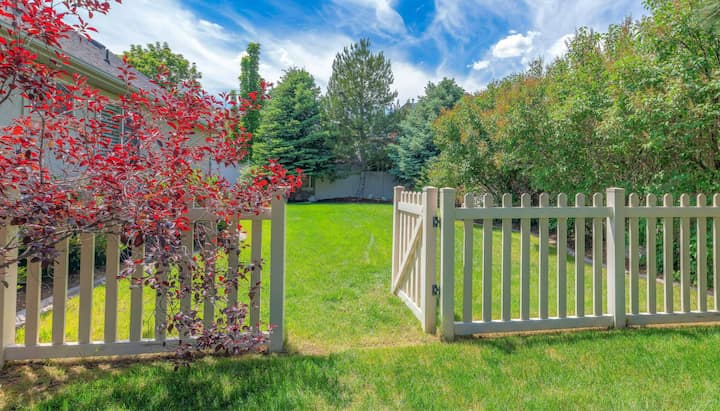
Common types of gates and gate designs
Gates are an important part of any outdoor landscape, providing a sense of security and belonging for those who live within the boundaries of the gate. Gates can also be aesthetically pleasing and add an element of beauty to a home.
Sliding gates
Sliding gates, also known as trackless gates, are a popular choice for many home and business owners. These gates are different from traditional swinging or cantilever gates in that they slide along a track or rail to open and close. This makes them ideal for areas where there is limited space. Sliding gates are also beneficial when it comes to convenience as they can be opened with the press of a button or the swipe of an access card.
Because sliding gates move on a track, they typically require more maintenance than other types of gates. The tracks must be kept free of debris and regularly greased to reduce friction and ensure smooth operation. The gate itself must also be inspected for damage and wear periodically.
Swing gates
The transition from sliding gates to swing gates is the most common type of gate used in residential properties. Swing gates, also known as hinged gates, move in a swinging motion either inward or outward. This allows for more efficient and easier entry into a property than with a sliding gate. There are several types of swing gates that can be used depending on the needs of the property owner.
Swing gates can be constructed from many different materials, including wood, metal, vinyl, and composite. Wood is a traditional material for swing gates, offering both aesthetic appeal and durability in all types of weather conditions. Metal is strong and provides greater security than other materials; however it does require regular maintenance to prevent rusting. Vinyl is relatively low cost and requires minimal care; however it may not provide the same level of security as metal gates. Composite offers similar benefits to vinyl but with greater strength and durability.
No matter what material is chosen for construction, each type of swing gate requires particular hardware components such as hinges and latches to secure the gate properly when closed. Additionally, an automated system or keypad access may be added to increase the overall security of the property while still allowing easy access when necessary.
Cantilever gates
Cantilever gates are sliding gates that hang from a frame, with the gate being suspended at one end. They are commonly used as driveway gates and for larger entryways, as they require minimal ground space in order to open and close. These types of gates offer many advantages, such as their simple operation and lack of need for counterweight or an additional track beneath the gate. Furthermore, they are available in a variety of modern designs to suit any aesthetic preference.
The cantilever gate has two main components: the base frame and the gate itself. The base frame is typically made of galvanized steel or aluminum and has posts that are embedded into concrete footings. The gate itself is hung from this frame by hinges at one end, allowing it to slide along the tip of the rail when opened. This type of gate also requires wheel assemblies in order to make opening and closing easier, however this can be automated with electric motors if desired.
Automatic gate openers
Automatic gate openers offer a convenient and secure way to regulate access to a property while reducing the need for manual operation. They are available in a variety of designs, all of which are generally powered by electric-driven motors. The most popular types include slide, swing and barrier arm operators. Slide openers use a motorized track system to move the gate along its length, while swing openers pivot the gate in an outward or inward direction using two motors at its hinges. Barrier arm operators are commonly seen at parking garages and can be used to control the flow of vehicles entering or exiting the premises.
When selecting an automatic gate opener, it is important to ensure that it meets the specific requirements of your property, such as size and weight capacity. It is also important to consider safety features such as photocell sensors that detect when someone or something is present on either side of the gate before it closes, as well as emergency release mechanisms that allow access in case of power outages. Additionally, if opting for a wireless system, signal strength should be taken into account for reliable operation.
Each type of gate has its own advantages depending on the location and purpose it is intended for. The selection of an appropriate type of gate will depend upon the individual’s needs, budget, and preferences. Ultimately, selecting the right type of gate will ensure security and style for any home or property. If you’re looking to have a gate installed, get in touch with our fence network for quality services.